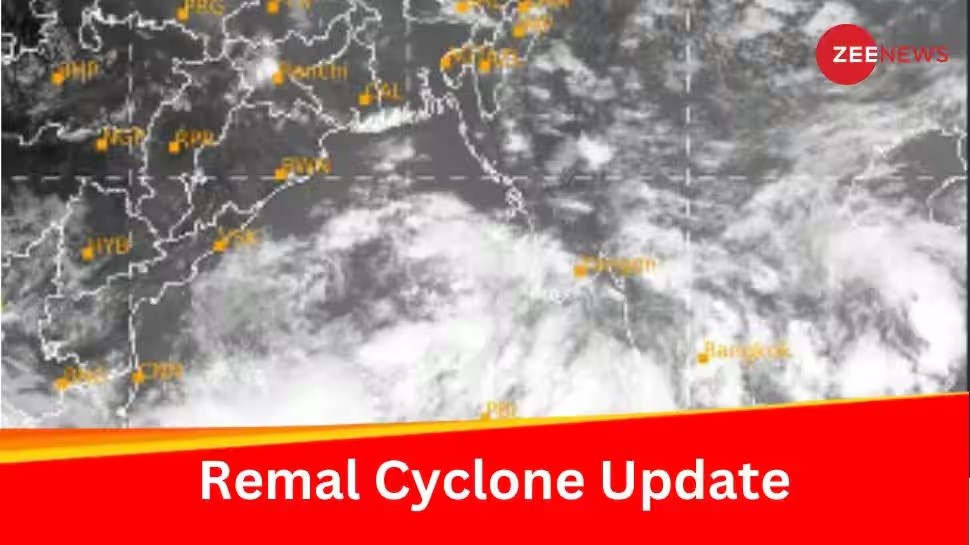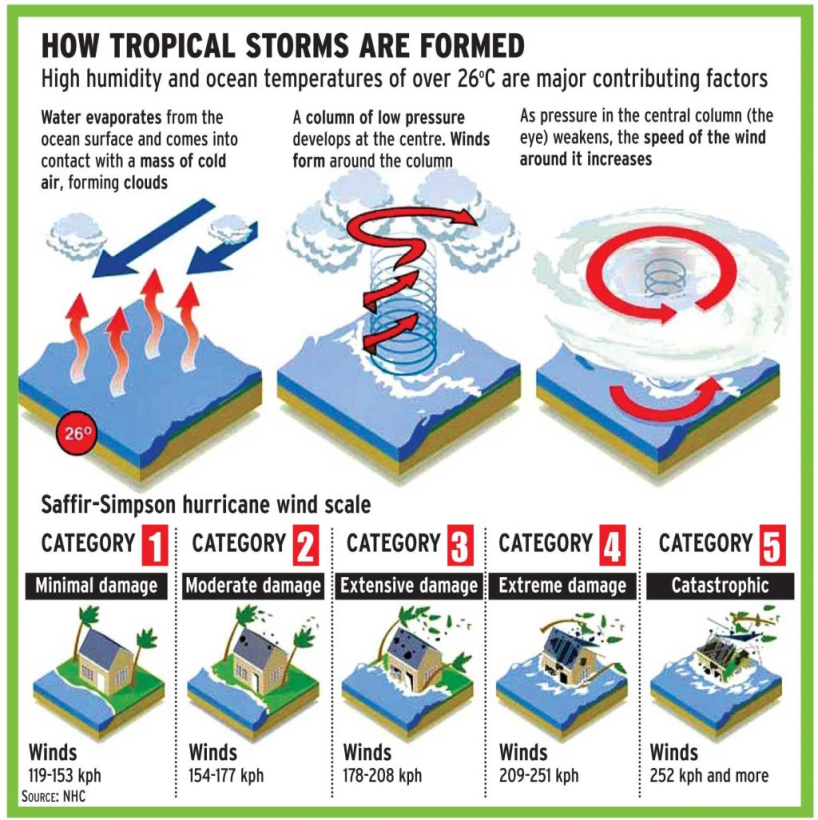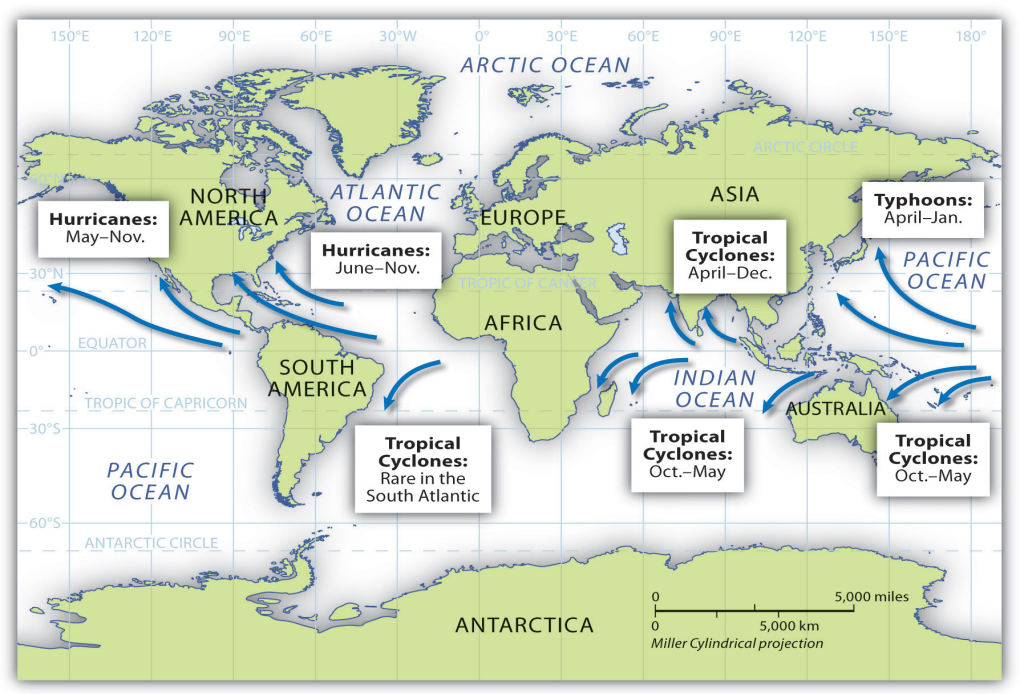Description

Copyright infringement not intended
Picture Courtesy: https://zeenews.india.com/india/cyclone-remal-landfall-update-west-bengal-parts-of-bangladesh-gear-up-for-impact-2751735.html
Context: The formation of a low-pressure area over the Bay of Bengal has prompted concerns about the potential development of Cyclone Remal.
Details
- A low-pressure area formed over the southwest and west central Bay of Bengal on May 22, 2024.
- The cyclonic storm is expected to move northeastwards and concentrate into a depression over central parts of the Bay of Bengal by May 24.
- The India Meteorological Department (IMD) issued a cyclone 'Remal' alert for Odisha, Gujarat, Maharashtra, and West Bengal.
|
India Meteorological Department
●A part of the Ministry of Earth Sciences, responsible for meteorological observations, weather forecasting, and seismology.
●Headquartered in Delhi, operates observation stations across India and Antarctica.
●Regional offices in Chennai, Mumbai, Kolkata, Nagpur, Guwahati, and New Delhi.
●One of six Regional Specialised Meteorological Centres of the World Meteorological Organisation.
|
Cyclones
- Cyclones are powerful and destructive weather phenomena caused by atmospheric disturbances around a low-pressure area.
- Cyclones are typically formed over warm ocean waters when there is abundant evaporation, atmospheric instability, and the Coriolis force (caused by the Earth's rotation) to initiate and sustain circular air movement.
- Classification
- Tropical Cyclones: Develop in the regions between the Tropics of Capricorn and Cancer.
- Extra-tropical Cyclones: Also known as temperate cyclones, form in higher latitudes.
- In the Northern Hemisphere, cyclonic circulation is counterclockwise, while in the Southern Hemisphere, it's clockwise.
- Stages of Development
- Formation and Initial Development: Dependent on warm sea temperatures, Coriolis force, and atmospheric instability leading to the formation of massive cumulus clouds.
- Mature Tropical Cyclones: Characterised by intense thunderstorms, a warm eye at the centre, and concentric bands of turbulent clouds.
- Modification and Decay: Cyclones weaken as they move over land or colder waters, leading to a reduction in wind speed and dissipation of the storm system.

Worldwide Distribution and Terminology
- Typhoons (China Sea and Pacific Ocean)
- Hurricanes (West Indian islands, Caribbean Sea, and Atlantic Ocean)
- Tornadoes (Guinea lands of West Africa and southern USA)
- Willy-willies (North-western Australia)
- Tropical cyclones (Indian Ocean)

Conclusion
- Cyclones are complex weather phenomena with significant implications for affected regions. Understanding their formation, behaviour, and potential impact, along with addressing the challenges posed by climate change, is crucial for effective disaster preparedness and management.
Must Read Articles:
TROPICAL CYCLONE
Source:
Down to Earth
|
PRACTICE QUESTION
Q. The Coriolis effect plays a crucial role in tropical cyclone development. Which of the following statements about the Coriolis effect and tropical cyclones is most accurate?
A) It deflects winds outward from high-pressure systems in both hemispheres, hindering cyclone formation.
B) It deflects winds inward towards low-pressure systems, regardless of hemisphere, aiding cyclone formation.
C) It deflects winds clockwise in the Northern Hemisphere and counter-clockwise in the Southern Hemisphere, influencing cyclone rotation.
D) It has minimal impact on tropical cyclones as their formation is primarily driven by sea surface temperatures.
Answer: C
|













